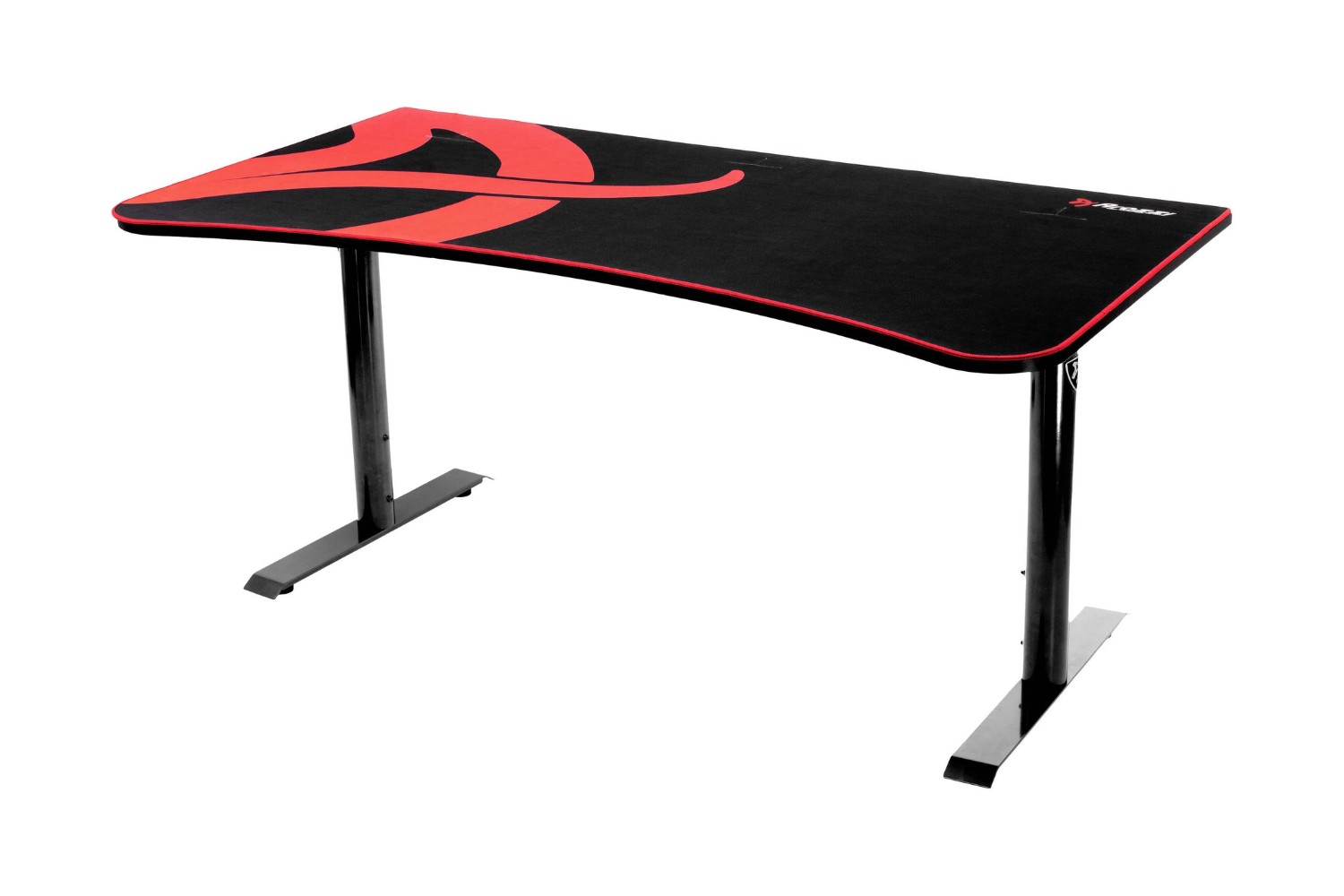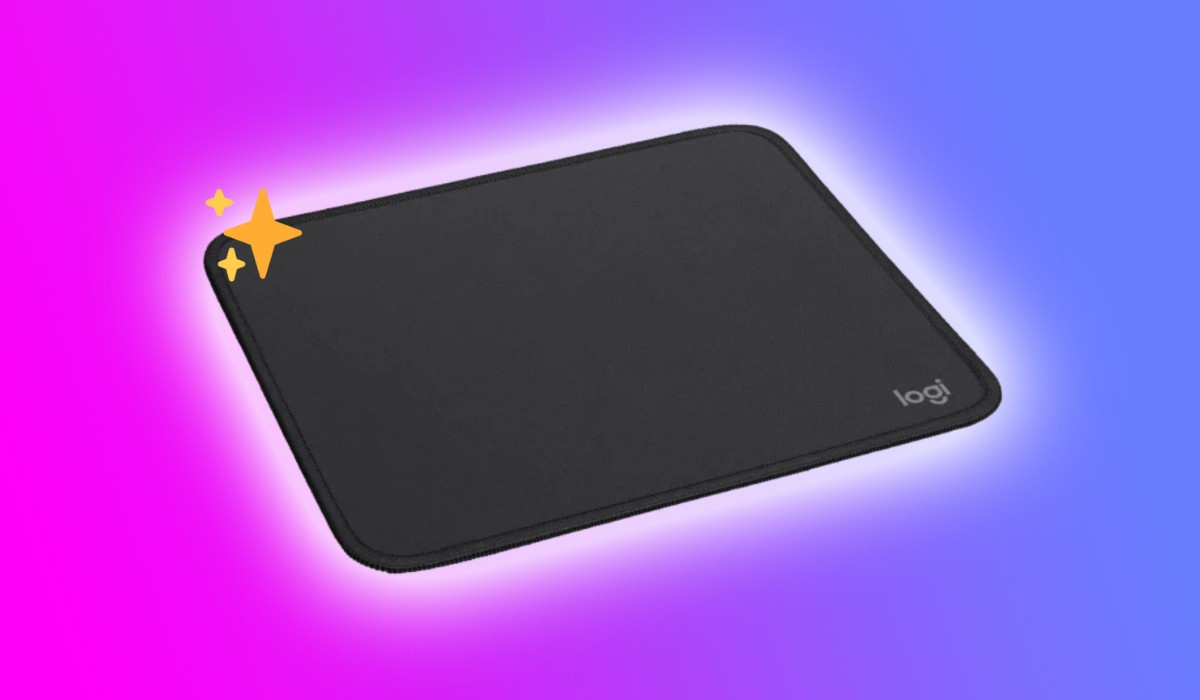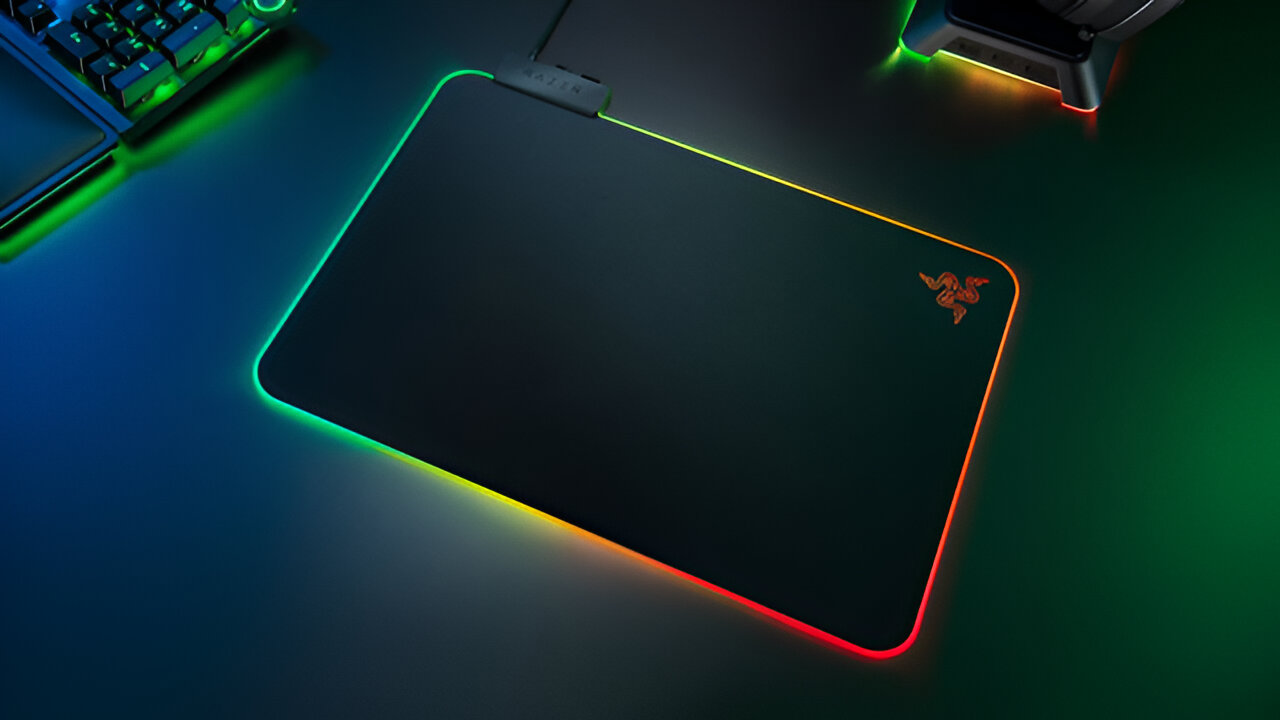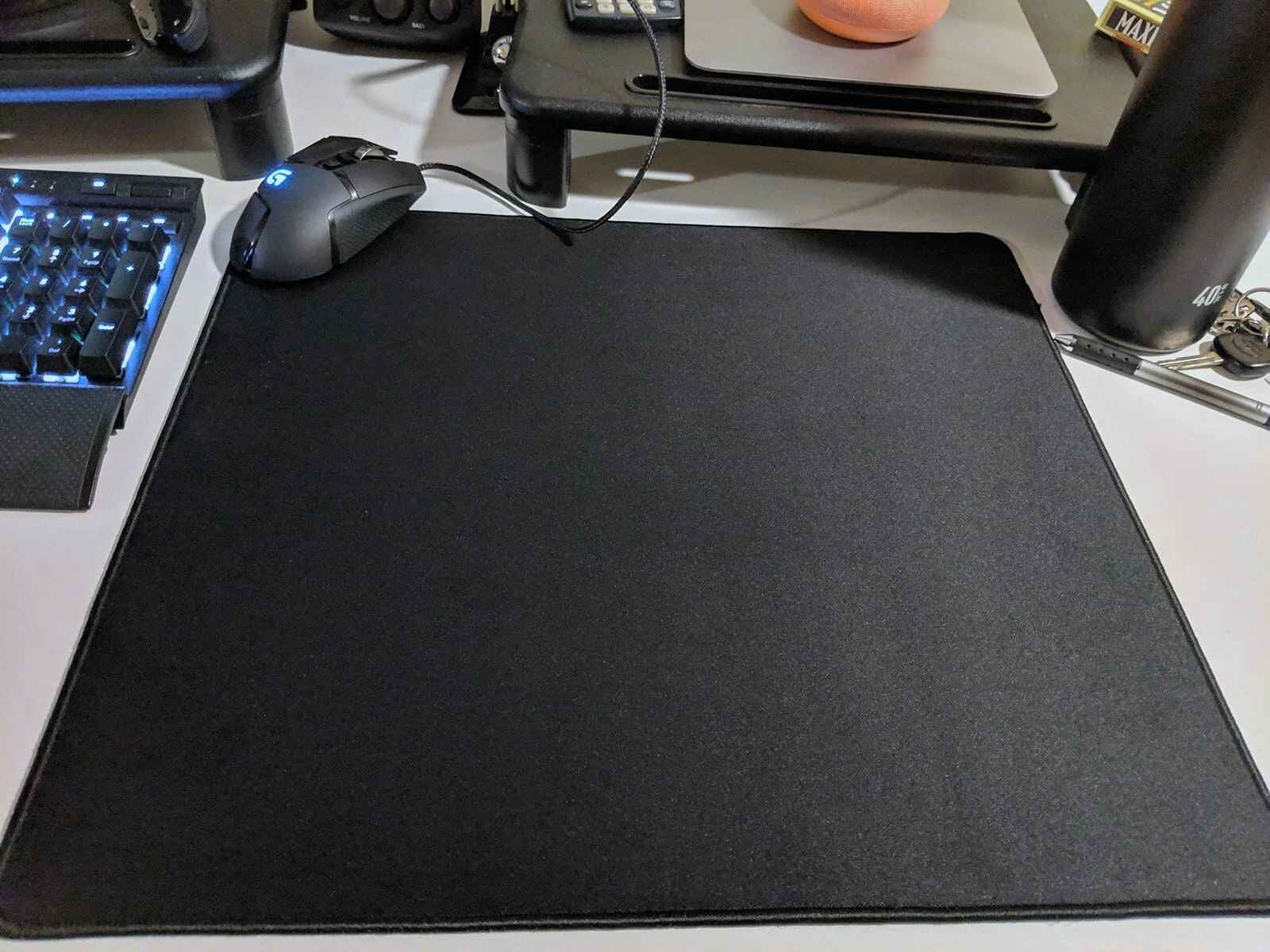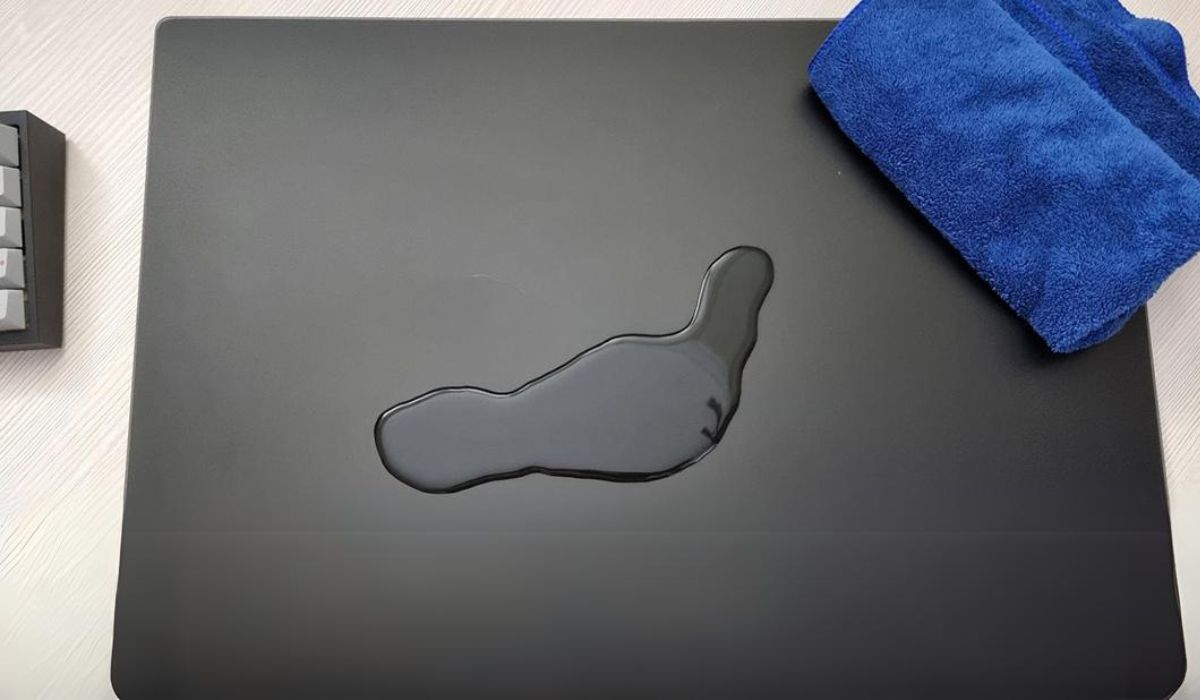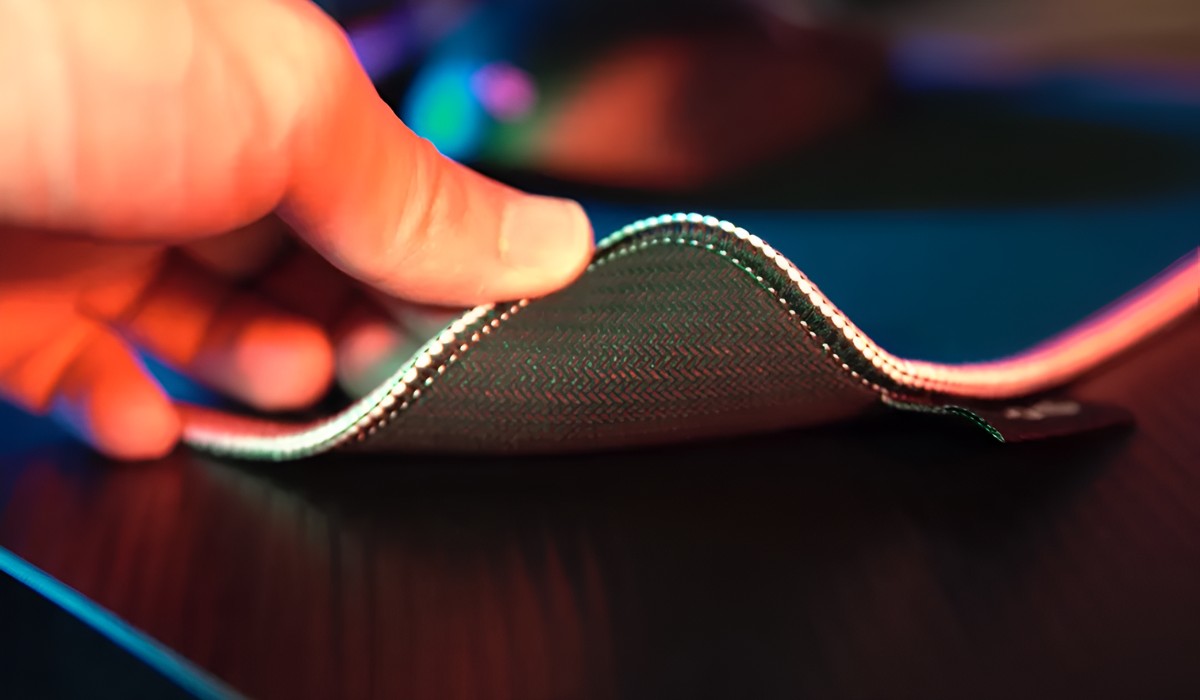Introduction
When it comes to computer accessories, the mouse pad often plays a crucial role in ensuring smooth and precise cursor movements. Over time, however, these trusty peripherals can accumulate dirt, grime, and even stubborn stains. If you've noticed that your mouse pad is looking a bit worse for wear, it might be time to give it a thorough cleaning. But how do you go about washing a mouse pad without causing damage?
In this comprehensive guide, we'll walk you through the steps to effectively clean your mouse pad, whether it's a cloth, plastic, or rubber variety. By following these simple yet effective methods, you can restore your mouse pad to its former glory and ensure a hygienic and comfortable computing experience.
So, if you've ever wondered how to tackle this seemingly daunting task, fret not. We've got you covered with practical tips and techniques to help you keep your mouse pad in top condition. Whether you're dealing with a basic cloth pad or a high-tech gaming mouse pad, the following steps will equip you with the knowledge and confidence to tackle the cleaning process head-on. Let's dive in and discover the best ways to wash your mouse pad, ensuring that it remains a reliable companion for your daily computing needs.
Step 1: Check the Care Label
Before embarking on the cleaning process, it’s essential to familiarize yourself with the care instructions provided by the manufacturer. Most mouse pads come with a care label or tag that outlines specific guidelines for cleaning and maintenance. By adhering to these instructions, you can avoid inadvertently damaging the mouse pad during the cleaning process.
If the care label is still intact and legible, take a moment to review the recommended cleaning methods. Some mouse pads may be labeled as “hand wash only,” while others could be deemed suitable for machine washing. Additionally, the care label may provide specific temperature guidelines, detergent recommendations, and instructions for drying the mouse pad.
For cloth mouse pads, the care label may indicate whether they are machine washable or if they require gentle hand washing. It’s important to pay attention to any special considerations, such as avoiding bleach or harsh chemicals that could compromise the integrity of the fabric or surface coating.
Similarly, rubber or plastic mouse pads may have specific cleaning instructions to prevent warping, discoloration, or degradation of the material. By heeding these guidelines, you can ensure that the cleaning process is tailored to the unique characteristics of your mouse pad, promoting longevity and optimal performance.
Should the care label be missing or illegible, consider visiting the manufacturer’s website or contacting their customer support for detailed cleaning instructions. In the absence of specific guidance, it’s advisable to proceed with caution and opt for gentle cleaning methods to minimize the risk of damage.
By taking the time to check the care label and understand the manufacturer’s recommendations, you can lay the groundwork for a successful and safe cleaning process, setting the stage for the subsequent steps in restoring your mouse pad to its pristine condition.
Step 2: Pre-treat Stains
Before immersing your mouse pad in water or cleaning solutions, it’s important to address any stubborn stains that may have accumulated over time. Stains can detract from the appearance of the mouse pad and may even impact its functionality if left unattended. By employing targeted pre-treatment methods, you can effectively tackle these blemishes before proceeding with the overall cleaning process.
For cloth mouse pads, start by identifying the nature of the stains. Common culprits include beverage spills, food residue, ink marks, and general discoloration from prolonged use. To address these stains, consider using a gentle stain remover or a mild detergent specifically formulated for delicate fabrics. Prior to application, perform a patch test in an inconspicuous area to ensure that the cleaning solution does not cause adverse effects such as color fading or fabric damage.
Apply a small amount of the chosen stain remover or detergent to the affected areas, gently working it into the fabric with a soft-bristled brush or cloth. Allow the pre-treatment solution to penetrate the stains for a few minutes, facilitating the loosening of the blemishes before the main cleaning process. Avoid using harsh chemicals or abrasive scrubbing techniques, as these can exacerbate the damage and compromise the integrity of the mouse pad.
For rubber or plastic mouse pads, addressing stains may involve using a mild cleaning solution or specialized stain remover suitable for the material. Carefully follow the instructions provided with the cleaning product, ensuring that it is compatible with the composition of the mouse pad. By taking a targeted approach to pre-treating stains, you can significantly improve the overall effectiveness of the cleaning process, yielding a refreshed and blemish-free mouse pad.
By investing time and care in pre-treating stains, you set the stage for a more thorough and successful cleaning outcome, paving the way for the subsequent steps in revitalizing your mouse pad.
Step 3: Hand Wash or Machine Wash
Once you have addressed any stubborn stains and familiarized yourself with the care instructions, it’s time to proceed with the primary cleaning method: hand washing or machine washing, depending on the recommendations for your specific mouse pad.
Hand Washing:
If the care label or manufacturer’s instructions indicate that hand washing is the preferred method for cleaning your mouse pad, follow these steps for optimal results:
- Gently fill a basin or sink with lukewarm water, avoiding extreme temperatures that could potentially damage the mouse pad.
- Add a small amount of mild detergent to the water, ensuring that it is suitable for the type of material used in the mouse pad.
- Submerge the mouse pad in the soapy water, allowing it to soak for a few minutes to loosen dirt and grime.
- Using gentle, circular motions, lightly scrub the mouse pad with a soft-bristled brush or cloth to dislodge any remaining debris.
- Rinse the mouse pad thoroughly with clean water to remove all traces of detergent, ensuring that no soapy residue remains.
- Gently press the mouse pad between clean towels to absorb excess moisture, taking care not to wring or twist the pad, which could cause damage.
- Allow the mouse pad to air dry completely before returning it to use, ensuring that it is laid flat to maintain its original shape.
Machine Washing:
If your mouse pad is deemed suitable for machine washing, adhere to the following guidelines to ensure a successful and safe cleaning process:
- Place the mouse pad in the washing machine, ideally accompanied by a few towels or other soft items to balance the load and prevent excessive agitation.
- Use a gentle cycle and cold or lukewarm water, avoiding hot water settings that could potentially damage the mouse pad.
- Add a small amount of mild detergent, opting for a product that is free from harsh chemicals and additives.
- After the washing cycle is complete, carefully remove the mouse pad from the machine and inspect it for any residual stains or detergent.
- Rinse the mouse pad under clean water to ensure that all detergent is thoroughly removed.
- Gently press the mouse pad between clean towels to absorb excess moisture, taking care not to wring or twist the pad.
- Allow the mouse pad to air dry completely before resuming its use, ensuring that it is laid flat to maintain its original shape.
By choosing the appropriate washing method and following the recommended steps, you can effectively cleanse your mouse pad, setting the stage for a revitalized and hygienic computing accessory.
Step 4: Air Dry
Following the hand washing or machine washing process, the next crucial step in restoring your mouse pad to its optimal condition is thorough air drying. Proper drying techniques are essential to prevent moisture-related damage and ensure that the mouse pad retains its shape, texture, and functionality.
Regardless of the cleaning method employed, it’s imperative to allow the mouse pad to air dry naturally, avoiding the use of artificial heat sources such as hairdryers or radiators, which can cause warping, shrinkage, or degradation of the materials.
After gently pressing the mouse pad between clean towels to absorb excess moisture, lay it flat in a well-ventilated area, preferably away from direct sunlight. This allows for consistent airflow around the mouse pad, promoting even drying and preventing the accumulation of moisture in enclosed spaces.
It’s essential to exercise patience during the drying process, as rushing this stage could compromise the integrity of the mouse pad. Depending on environmental conditions such as humidity levels, the drying time may vary. Allow the mouse pad to air dry completely before considering its readiness for use, ensuring that both the front and back surfaces are free from residual moisture.
By prioritizing thorough air drying, you can safeguard your mouse pad against potential damage and maintain its quality for long-term use. Once the drying process is complete, your mouse pad will be refreshed, hygienic, and ready to resume its role as a reliable companion for your computing endeavors.
Step 5: Spot Clean for Maintenance
After completing the comprehensive cleaning process, it’s prudent to incorporate regular spot cleaning into your maintenance routine to preserve the cleanliness and functionality of your mouse pad. Spot cleaning allows you to address minor spills, stains, and surface dirt promptly, preventing them from becoming deeply ingrained and requiring more intensive cleaning in the future.
For cloth mouse pads, spot cleaning can be achieved by using a mild detergent or specialized stain remover specifically formulated for delicate fabrics. When a spill or stain occurs, promptly blot the affected area with a clean, absorbent cloth to remove excess moisture. Then, apply a small amount of the chosen cleaning solution to the soiled area, gently working it into the fabric with a soft-bristled brush or cloth. After allowing the solution to penetrate the stain for a few minutes, carefully blot the area with a clean, damp cloth to lift the blemish. Finally, ensure that the spot-cleaned area is thoroughly dried before resuming use.
Similarly, rubber or plastic mouse pads can benefit from spot cleaning to maintain their appearance and functionality. Utilize a mild cleaning solution suitable for the material, following the manufacturer’s recommendations, and gently address any localized stains or dirt buildup. After spot cleaning, ensure that the mouse pad is thoroughly dried to prevent the accumulation of moisture beneath the surface.
By incorporating spot cleaning into your regular maintenance routine, you can uphold the cleanliness and visual appeal of your mouse pad, prolonging its lifespan and ensuring a hygienic computing environment. This proactive approach to maintenance minimizes the need for extensive cleaning sessions and promotes the longevity of your cherished mouse pad.
Conclusion
Cleaning your mouse pad is a simple yet essential task that can significantly impact your computing experience. By following the steps outlined in this guide, you can effectively restore your mouse pad to its original cleanliness and functionality, ensuring that it remains a reliable companion for your daily activities.
From checking the care label and pre-treating stains to choosing the appropriate washing method and facilitating thorough air drying, each step plays a crucial role in revitalizing your mouse pad. By adhering to the manufacturer’s guidelines and employing gentle cleaning techniques, you can safeguard the integrity of the mouse pad while effectively removing dirt, stains, and grime.
Furthermore, the incorporation of spot cleaning into your maintenance routine serves as a proactive measure to address minor spills and stains promptly, preserving the pristine condition of your mouse pad over time. By embracing these practices, you can prolong the lifespan of your mouse pad and ensure a hygienic and visually appealing computing environment.
Ultimately, the care and attention invested in cleaning and maintaining your mouse pad contribute to a more enjoyable and comfortable computing experience. Whether you rely on a standard cloth mouse pad for everyday use or a specialized gaming mouse pad for immersive gameplay, the cleanliness and condition of your mouse pad can significantly impact its performance and your overall satisfaction.
So, the next time you notice that your mouse pad is in need of a refresh, remember the simple yet effective techniques outlined in this guide. By taking proactive steps to clean and maintain your mouse pad, you can uphold its quality and functionality, ensuring that it continues to enhance your computing endeavors for the long haul.









